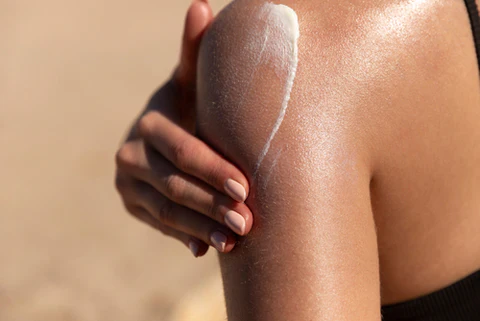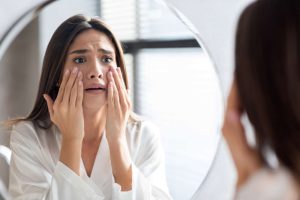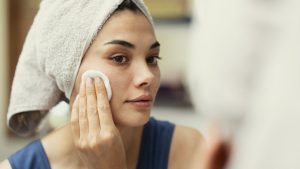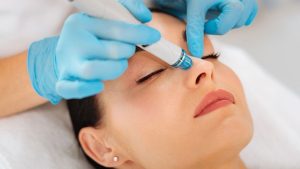Sunscreen is one of the most critical components in a skincare routine, as it protects against ultraviolet (UV) rays. Many users apply sunscreen once in the morning and believe they are protected throughout the day, which is false. There are various reasons why sunscreen may not be effective, including sweating, showering, and naturally produced skin oil. Failing to reapply sunscreen over long intervals can greatly increase the risk of sun exposure, premature ageing, and even cancer. Knowing when and how to properly use sunscreen allows for maximum benefits without risking the skin’s health.
The Science Behind Sunscreen Protection
The way sunscreen functions is simple: it works by either absorbing or reflecting UV radiation to prevent the skin from being penetrated. There are two basic types of sunscreen: chemical and physical sunscreen. Unlike physical sunscreen that simply reflects UV radiation, chemical sunscreen absorbs the radiation and converts it to heat. It makes sense that the effectiveness of both types of sunscreens would diminish at different times for distinct reasons, underscoring the importance of regularly reapplying sunscreen. The SPF (Sun Protection Factor) rating tells the user approximately how long the sunscreen can protect the skin from UV radiation before needing to be reapplied.
Duration of Sunscreen Effectiveness on the Skin
The effectiveness of any sunscreen depends upon its formulation, SPF rating, and several external factors. On average, most sunscreens last for about two hours, after which they tend to break down. Additional factors such as sweating, swimming, and rubbing the skin can speed this process. Even without the person venturing outdoors, the moisture from the skin and environmental exposure can make the sunscreen wear off over time. To maintain the optimal level of protection, sunscreen should be reapplied frequently, especially while being next to the sun for long durations.
Sunscreen Reapplication for Strenuous Outdoor Activities
Individuals who work or engage in leisure activities that require long periods outdoors require particular diligence for reapplying sunscreen. It is no secret that the UV rays are the most potent between 10 a.m and 4 p.m, so sunscreen is equally important during these times. Skin exposed during hiking, running, and beaching should be protected with higher SPF sunscreen, otherwise the skin is bound to get sun burned. Additional protection comes in the form of water resistant sunscreens, however, these too need to be reapplied after swimming and extreme perspiration. In order to remain protected, sunscreen should be reapplied every two hours, or immediately after coming from the waters.
The Need to Reapply Sunscreen While Swimming
Water helps in blocking UV rays, but it is vital to reapply sunscreen for swimmers. Even water-resistant sunscreen loses its efficacy over time. Rubbing off water with a towel also takes off sunscreen, putting the skin at risk for sunburns. For optimal protection, it is best to reapply sunscreen after swimming or sweating. It is advisable to use a water-resistant sunscreen with broad spectrum and high SPF for swimming, as it offers better protection against UVA and UVB rays.
Reapplying Sunscreen Over Makeup
Makeup users often find it difficult to reapply sunscreen throughout the day. Regular sunscreen lotions applied over foundation without care can smudge it, which makes it tough to protect against the sun while looking nice. Luckily, several makeup-friendly options exist, such as sunscreen sprays, powders, and cushion compacts. These let people reapply while maintaining makeup and ensuring protection from sunburn. An added option is using setting spray with SPF.
The Role of Sunscreen in Preventing Premature Aging
Sunscreen application aids in hydrating moisture levels and averting wrinkles, therefore providing treatment against developing premature skin ageing. Like any other layer of skin protection, sunscreen fades in value when not constantly reapplied. Most notably, when you do not use sunscreen, it’s health advantages neutralise over a timeline, leaving room for hyperpigmentation, wrinkles, and fine lines to populate freely. Skin health can be maintained when sunscreen is reapplied, resulting in unrivalled youthfulness. To counter the ageing process, daily skincare routine changes along with sunscreen incorporation and usage of expert advice about sunscreen reapplication are greatly helpful.
Sunscreen Reapplication in Cloudy and Indoor Conditions
Lack of sunlight does not equate to protection from UV rays, due to factors like clouds and glass windows, which is something other people tend to believe carelessly. Weather-encompassing blinds an individual from the potential danger of getting sunburn, but restricting 80% of UV rays is equally harmful. Charging gadgets like cellphones, along with spending extended periods by glass windows while working, leads to blue light emission, which is damaging to the skin. Working in an office space easily prevents skin damage with lightweight and sunscreen application on the skin, along with recombining cleansing practices, making booster protection for the skin simple.
Tips on Choosing the Right Sunscreen For Health
Wearing sunscreen saves your skin from burning, but not all of them are made equal. Hence, it is important to research beforehand. Broad-spectrum sunscreens are essential when travelling because they protect against both UVA and UVB rays, which can result in skin burning as well as long-term harm to the skin. It is recommended for daily use to have an SPF as high as 30; however, to minimise damage while spending time outdoors, it would be most beneficial if used in 50 or more. An added plus for active people is water-resistant goodies; however, make sure to reapply sunscreen when needed because it won’t be effective otherwise. Always make it a point to read the ingredient list and go for products recommended by your skin expert for your safety.
How Physical Activity Impacts Sweat
The body will always try to maintain homeostasis regardless of what heat is thrown its way. The body’s temperature will rise more than the normal index, which, in turn, leads to excessive sweating. This sweating becomes a hurdle when one wears sunscreen because on hotter days, garments or being active outdoors tends to get sweat, which can result in the unwanted feeling of a sticky barrier on skin. This problem can be tackled by using sport-specific or sweat-proof sunscreens. They go a long way, with the downside being that they need to be reapplied quite often. Using a sunscreen that is lightweight and does not clog the pores guarantees making activity comfortable while protecting from the UV rays. With travel-size UV protection on the go, sunscreen can be reapplied any time during the day, eliminating the concern of being outdoors and feeling vulnerable to UV rays.
Conclusion
Sunscreens should be reapplied regularly because they lose their efficacy over time, increasing the chances of getting sunburnt, aged, or even skin cancer. Most experts recommend reapplying every two hours and right after you bathe, sweat, or use a towel. Reapplying sunscreen while indoors is crucial because UV rays are damaging even on cloudy days. The best approach is to choose quality skincare products that contain broad-spectrum sunscreen. Following the instructions of professionals regarding the reapplication of sunscreen will help individuals stay protected and avoid long-term skin conditions.




